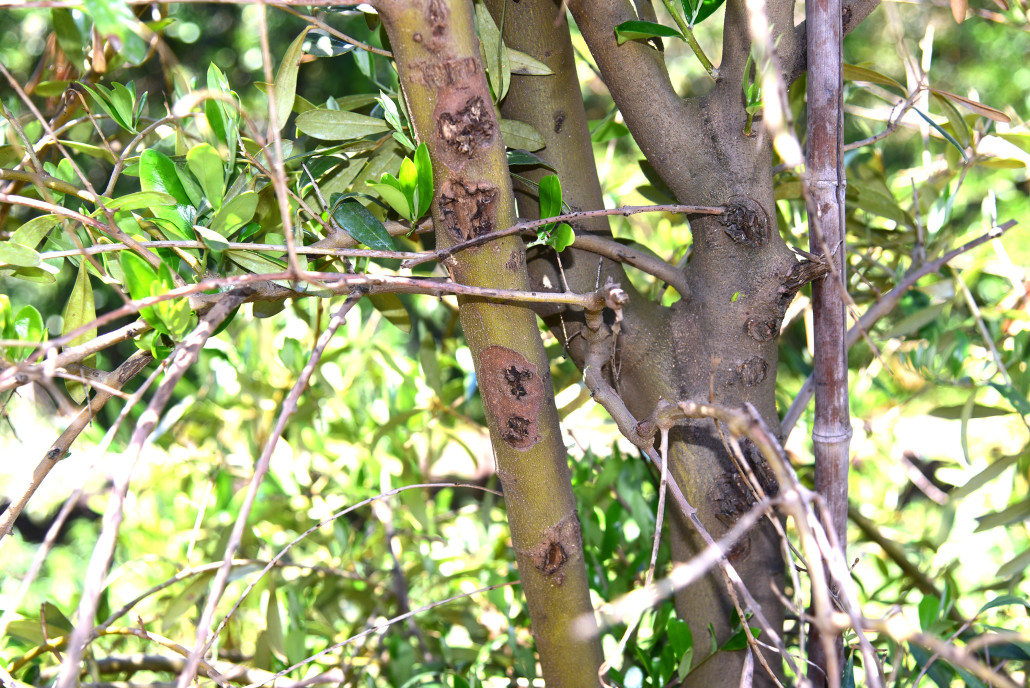
New Disease Reported in California Olive Orchards
During a recent meeting of the Olive Oil Commission of California, several board members reported evidence of a new disease that appears to be affecting California olive trees. Posted here are pictures by University of California Plant Pathologist Florent Trouillas which illustrate symptoms in twigs and leaves from infected orchards that may help you determine if this problem occurs in your olive orchards.



![Neofabraea twig lesions on Arbosana[1]](http://www.oliveoilcommission.org/wp-content/uploads/2016/07/Neofabraea-twig-lesions-on-Arbosana1.jpg)
According to Trouillas, the putative pathogen, known as Neofabraea, was initially reported in Coratina and Picholine cultivars in two commercial orchards in Sonoma County in 2013. OOCC Board members report it is being found in some orchards located in the Sacramento Delta growing areas on Arbosana and, possibly, Arbequina varieties and may be more prevalent in humid growing areas. It is apparently related to the “bulls-eye rot” pathogen in apples and pears. Symptoms in olive include defoliation, leaf spots, twig die-back and twig lesions.
The OOCC Research Committee will be looking at this problem and may consider funding of research to investigate the pathogen identity and biology, as well as control strategies for this new disease. In the meantime, please take a look at the photos included here to help determine if this disease is present in your orchard. If you believe you see evidence of this new disease, please contact your county farm advisor.